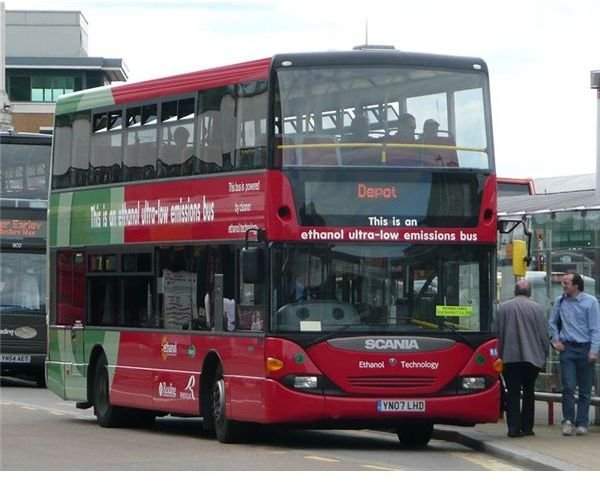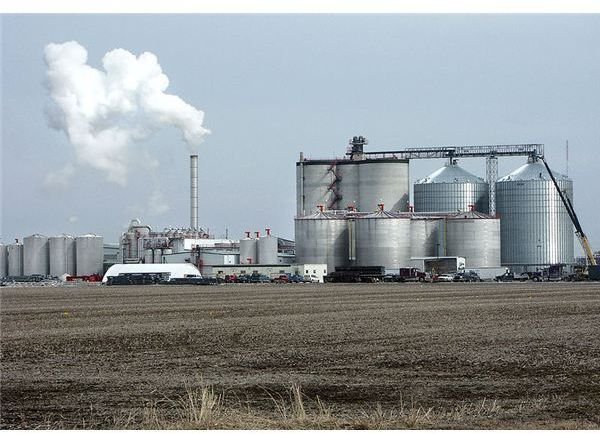Why Ethanol is not a Good Alternative to Gasoline?
With ever-increasing gas prices, people are looking for alternative fuels for their vehicles. One such option is ethanol. But is it viable as an alternative to gasoline or another petroleum fuel? Unfortunately the negatives of ethanol as a motor fuel are higher than they could be.
Usage of Ethanol as a Fuel
Ethanol fuel, or mostly known as E85 fuel, is a mixture of ethanol and gasoline with the proportion of 85:15. It is commonly used in internal combustion engines that have been modified to use ethanol. Even without modifications ethanol can be used to drive vehicles with smaller proportions. In 2005, 4 billion gallons of ethanol was produced in the US, and they were mainly produced using the starch in corn kernels. This is very environmentally friendly production process compared to the production of petroleum fuels. This is one of the major reasons for the favor of ethanol as a fuel. But the entire picture is quite different.
Negatives of Ethanol as a Motor Fuel
The emission of pollutants and the scarcity of resources have led to more concerns about searching for alternative fuel options to petroleum. But can we consider ethanol as a viable alternative to petroleum fuel? Here are the main negatives of ethanol as a fuel, and they tell the story.
1. Ethanol Isn’t Much Cheaper

One of the main concerns is the price when someone wants to shift from gasoline to ethanol. In this difficult economy, people can be easily motivated to such a shift if it is cheap as it predicts. In 2007, the popular automobile website Edmonds.com performed a test to make a comparison between gasoline and ethanol (E85) powered cars in terms of costs, performance, and efficiency. The test drive consisted of a 667 mile round trip from San Diego to Las Vegas with a flexible fuel 2007 Chevrolet Tahoe.
According to the test results, 36.5 gallons of fuel were required when gasoline was used for the trip. But the ethanol fuel (E85) consumption was 50 gallons. Fuel economies were 18.3 mpg and 13.5 mpg respectively for gasoline and ethanol. The percentage of fuel economy for ethanol was 26.5 and it was the worse. Although cost per gallon for ethanol was lower than gasoline, due to poor fuel economy 22.8% more money was spent on fuel for the same distance. So it’s clear that even though the price seems cheaper, actually it is not.
2. Can Ethanol Reduce Greenhouse Gas Emissions?
Wide recognition as a green fuel has led ethanol to be a main concern over petroleum. But the reality is beyond the truth. According to the same test results that mentioned above, gasoline produced 706.5 pounds of carbon dioxide, compared to 703.1 for E85. When we see these results, we can’t say that ethanol is a good alternative to gasoline. This is one the negatives of ethanol as a motor fuel.
3. Ethanol Is Widely Unavailable

If there’s a necessity of major shift to alternative fuels, it is also a need to think about its availability. Today only Brazil has been successful in using ethanol as a major fuel within the country. It is a success that has been achieved after over three decades of implementations. Even in the US only several states have sufficient facilities to use ethanol for a vehicle. In Minnesota, Wisconsin, Indiana, and Illinois where corn are grown, you may find a nearby filling station. But most of the other states have a limited number of places that provide ethanol. If ethanol is widely unavailable, we can’t use ethanol as a fuel.
4. Environment Considerations Due to Ethanol Production
Another negative of ethanol as a motor fuel is its environmental effects. In the U.S., marginal land devoted to wildlife under the U.S. Dept. of Agriculture conservation program has been converted to growing ethanol. In Brazil deforestation was doubled in 2008 mainly for growing corn to feed the increasing ethanol fuel consumption.

The Amazon rain forest, which is an incomparable storehouse of biodiversity, is being heavily devastated and Brazil already has become the fourth largest carbon emission producer. This has been a major reason for the increase of the world’s average temperature. Growing of corn has many other bad aspects too. Each gallon of ethanol requires 1,700 gallons of water and produces 6 to 12 gallons of noxious organic effluent. Also it leads to severe soil erosion. Therefore negative aspects of ethanol as a fuel are more severe than it is anticipated.
It’s a true that there’s a need of alternative fuel for petroleum as oil is not lasting more than 40 years. But in the absence of oil, ethanol can be a good alternative if there’s no favorable option. But negatives of ethanol as a fuel have led it not to become a viable solution at this time.
Related Links
- <strong>Ethanol</strong> <strong>Production</strong> Process: Dry Mill Process
- <strong>Ethanol</strong> Expansion and Crude Oil Prices
- Powering Cars with Cleaner-Burning <strong>Rewewable Fuels</strong>
This post is part of the series: Ethanol as a Fuel
Ethanol has been recognized as an alternative to ever rising fuel crisis of the modern world. Learn what it is capable of and what it isn’t, when providing a solution to this crisis.
